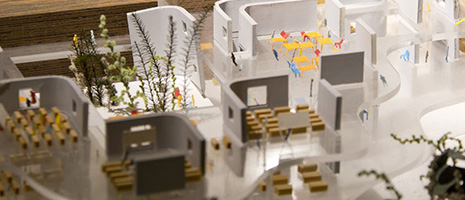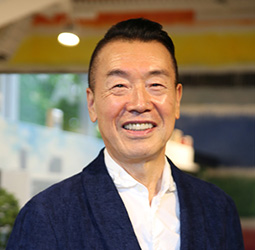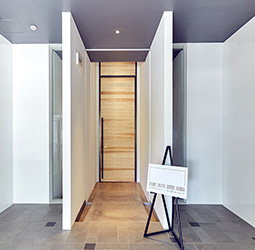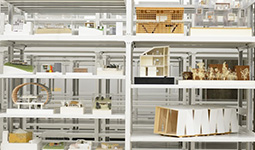Home > Highlighting JAPAN > Highlighting Japan November 2017 > Architects of Japan: Building the Future
Highlighting JAPAN


Diffusion and Succession of Architectural Culture
ARCHI-DEPOT is a museum that archives and exhibits architectural models. It also allows people to rediscover architectural culture and to pass on memories of architecture to the future.
In June 2016, ARCHI-DEPOT opened on Tennoz Isle, in Tokyo’s waterfront area, approximately 15 minutes from Haneda Airport by monorail. It is the only museum in Japan that archives and exhibits architectural models, which are produced by architects who are active both locally and internationally.
Architectural models play an important role in helping architects to stay realistic. They also allow architects to share the series of events that will unfold before the completion of the building, ensuring smooth communication with clients. The aim of ARCHI-DEPOT is to preserve the architectural culture of Japan and to diffuse and perpetuate it through the exhibition of architectural models. Each model is a technical masterpiece imbued with the architect’s ideas.
ARCHI-DEPOT is operated by Warehouse TERRADA, whose core business is the preservation and storage of art objects, wine, movies and audio media. The company invests in new business and talent that it deems to have cultural significance regardless of the field, and to turn investments into opportunities to unearth new talent and support the succession of culture. ARCHI-DEPOT was established as part of such initiatives.
Numerous overseas museums archive and exhibit architectural models. However, in Japan, they are often stored by architectural design firms, and disposed of once their role has ended. Securing spaces to store models is not easy even for renowned Japanese architects, and this has been a common issue for those who work in the architecture community.
The idea of establishing ARCHI-DEPOT occurred to Yoshihisa Nakano, CEO of Warehouse TERRADA, when he noticed architectural models piled mountain-high at the architectural firm of an acquaintance. He was astonished by the sheer amount and proposed to store them in his company’s warehouse.
“I was moved by the intricacy of all models, including the ones that had failed to materialize. I came up with the idea of opening a new museum while using our company’s warehouse, because I really wanted a lot of people to see and experience the models,” reflects Nakano. His passion soon spread to many other locally active architects, and the museum has developed over an area about 450 square meters with a ceiling height of 5.2 meters, becoming a place to archive and store approximately 500 architectural models produced by non-Japanese architects as well as globally renowned architects, including Kengo Kuma and Shigeru Ban.
The concept of the regular exhibitions held at ARCHI-DEPOT is “Keep changing without staying in one place.” Particular emphasis is placed on exhibitions planned in collaboration with architects, including exhibitions proposed by architects.
Says Nakano, “The open exhibition of architectural models that are not always seen broadens the opportunities to facilitate horizontal relationships among architects or other business opportunities. This might also help to expand the future prospects of those who work for renowned architects as their second or third in command. I hope that this space will make people aware of the attractiveness of Japanese architecture and help those who are supporting architectural culture.”
ARCHI-DEPOT has established a system to smoothly transition between exhibits by storing models that are currently not on display in other warehouses owned by Warehouse TERRADA, and is planning to provide opportunities for a wide range of architects, both up-and-coming and famous.
Visitors can scan QR codes using their own tablet or smartphone to obtain information about each exhibit and take pictures freely within the premises. It is even possible for them to express themselves via SNS in the moment.
Says Nakano, “I am thinking about exhibiting architectural models from overseas in the future. I hope that those who visit this space will find this interesting. I want to help inspire their imagination so they can dream about actually seeing and living in such buildings.”
© 2009 Cabinet Office, Government of Japan









